Why do most companies fall short when it comes to lead nurturing? The answer is simple: they fail to develop relationships with potential buyers throughout the customer journey, focusing solely on the end conversion without laying the necessary groundwork.
When done right, lead nurturing builds trust and loyalty while priming leads for conversion. Instead of using a hard sales pitch, consider your brand an invaluable compass for prospects, pointing them to the solutions they seek.
Let’s dive in and transform how you attract, engage, and convert high-value leads! By the end, you’ll have a robust game plan to transform leads into delighted customers.
“ Lead generation is important — but it’s only one piece of the puzzle. The real magic happens when your lead nurturing reaches those people. Don’t send people to your copy and cross your fingers, hoping for a sale. That strategy doesn’t work. In the digital age, capturing and nurturing leads is essential for business growth. Yet, many companies struggle to turn raw leads into loyal, paying customers. “
– Neil Patel, co-founder of NP Digital
Lead nurturing is the process of continuously engaging and educating potential customers at every stage of their buyer’s journey. It involves providing valuable, relevant content and information to leads to build trust, establish authority, and position the business as the ideal solution to their needs.
The goal is to “nurture” leads by addressing their concerns, questions, and objections until they are ready to purchase. Relationships are built through helpful lead nurture content and communications, listening to leads, and understanding their needs.
The lead nurturing process continues even after a lead converts to a customer, as the business continues providing support and new offers to turn them into loyal brand advocates.
Lead generation and qualification work together to help businesses with their unique role in transforming a potential market audience into loyal customers. Lead Generation focuses on identifying potential leads, lead qualification involves assessing their suitability and readiness to buy, and lead nurturing is dedicated to fostering and maintaining relationships with these prospects.
Before we dive deeper, let’s analyze deeper lead generation vs. lead qualification vs lead nurturing:
Lead generation refers to the initial stages of attracting new potential customers and capturing their contact information, typically through tactics like content offers, website conversions, event sign-ups, etc. It’s the process that brings new leads to the top of the sales funnel.
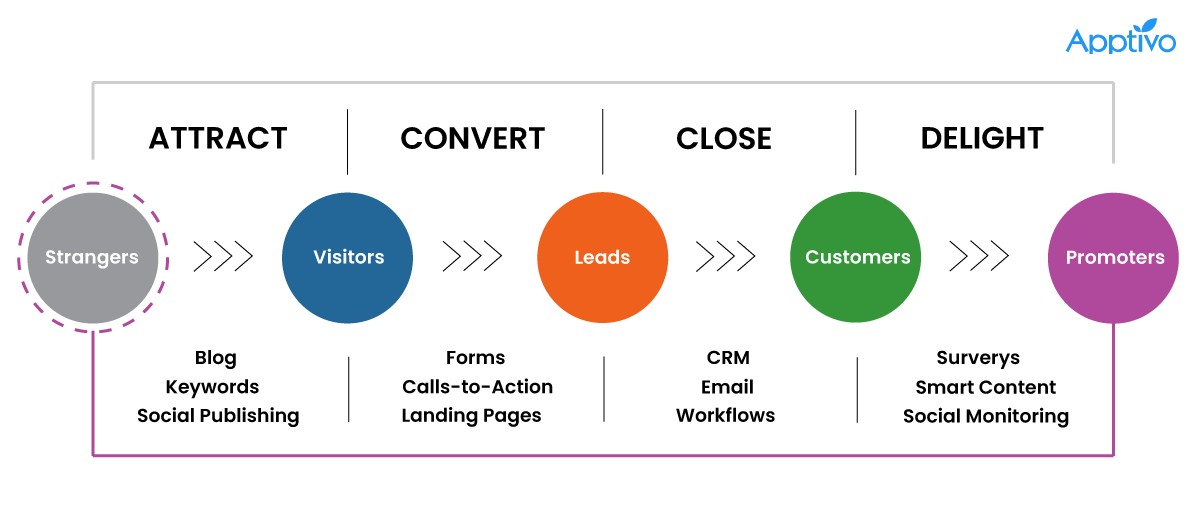
Image source apptivo.com
Lead qualification identifies which leads are more “sales-ready” by assessing their intent and interest in offerings. Qualified leads are filtered and prioritized for follow-up to further down the sales pipeline.

Lead nurturing picks up after lead generation and qualification. Once promising new prospects are qualified, lead nurturing focuses on building relationships with those leads through personalized, relevant communications over time.
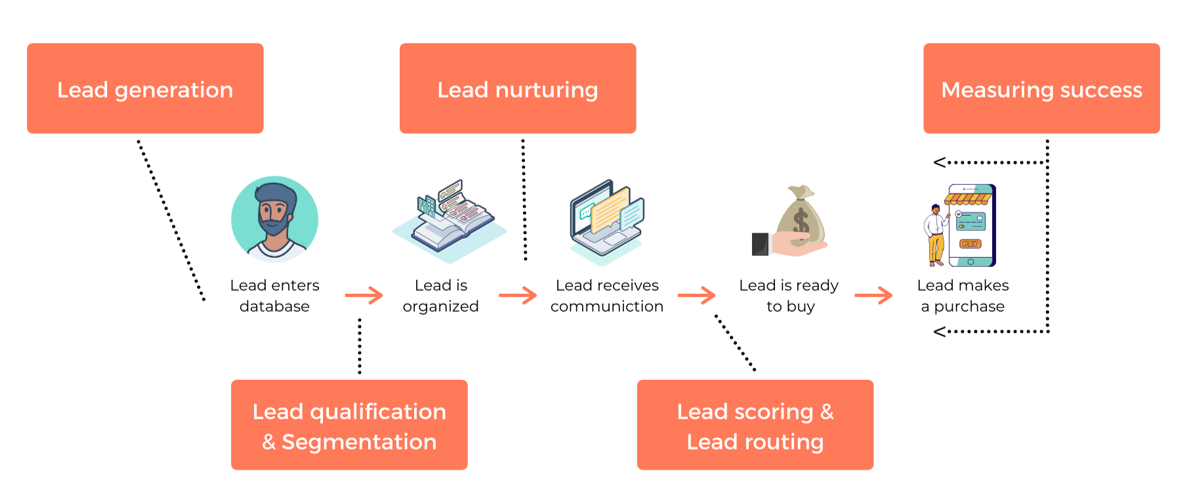
Reading so far, a question might arise: How to nurture leads? Simply, an effective lead nurture strategy follows these steps:
The goal is to make every communication helpful and personalized, guiding the lead toward a purchase decision. With the right nurturing, cold leads can become loyal, happy customers.
Investing in lead nurture provides immense benefits that directly impact business growth and success. Here are some of the top reasons it’s so crucial:
A company boosts its brand visibility by consistently publishing high-quality, valuable lead nurture content such as blogs, guides, webinars, and more. It establishes itself as an authority and thought leader in its industry. This attracts more potential customers to become aware of and interested in the brand to expand its reach and visibility organically.
Lead nurturing improves metrics like lead conversion rates, sales cycle lengths, and sales-ready leads. Better-qualified leads enter the pipeline, improving lead quality. Ultimately, customers derived from lead nurturing have higher lifetime value.
By providing relevant and helpful information and content to leads over time, lead nurturing demonstrates how the company can add value to prospects. It positions the brand as a knowledgeable partner rather than just a sales rep. This focus on continuously giving value helps build trust, rapport, and a loyal community.
Lead nurturing increases customer retention and loyalty, thereby lowering acquisition costs. Not to mention that nurtured leads convert more often, as they feel invested in the relationship and are less likely to churn. Their lifetime value is also higher, which positively impacts profit margins.
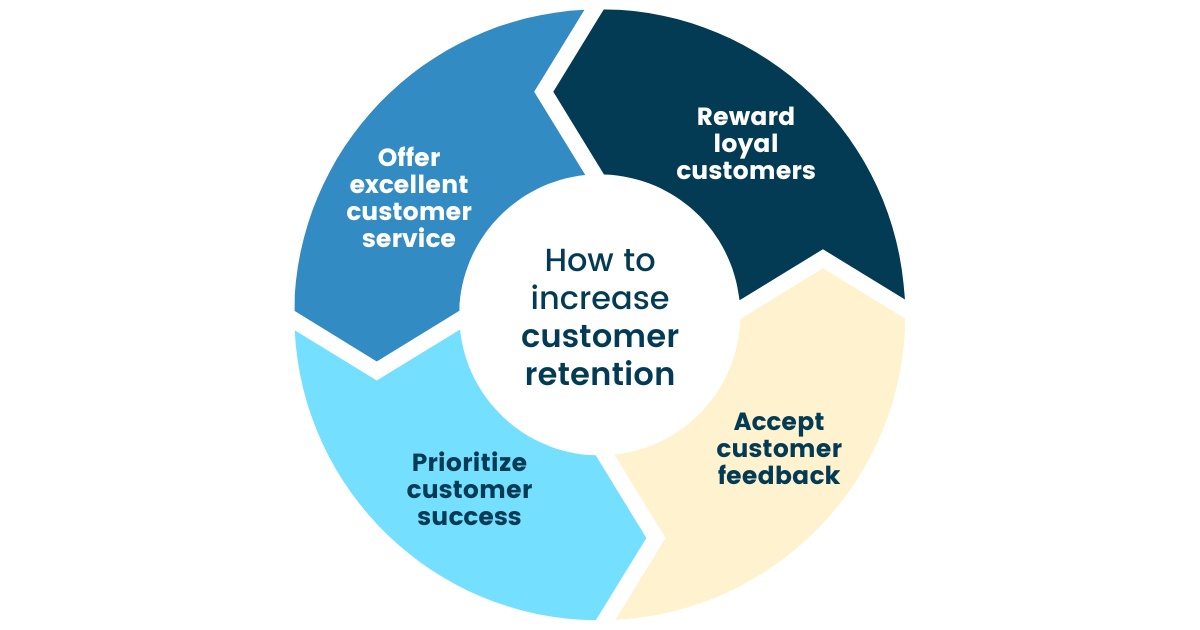
Image source act.com
Because tailored and personalized messaging helps identify prospect pain points and objections, companies can guide buyers to purchase faster and more accurately. Establishing expertise and relevance shortens sales cycles, and prospects convert quicker when the content resonates.
Lead nurturing improves the overall marketing ROI significantly thanks to better lead conversion, shorter sales cycles, higher lifetime value, and increased retention. Companies get substantially more bang for their lead nurturing marketing investment buck since their money is better utilized to generate and convert high-quality leads.
Nurtured leads that trust the brand convert faster, shortening sales cycles. Customized nurturing shows how a solution is the right fit for that particular prospect’s needs. Even cold leads become much more sales-ready after receiving tailored nurturing.
Tracking prospect interactions and behaviors provides a wealth of data that can be used better to understand target audience needs, challenges, and preferences. These insights enable brands to optimize their lead nurturing system and nurturing marketing strategies for better results.
Thoughtful lead nurture makes a brand helpful, educational, and customer-centric, differentiating it from competitors focusing only on selling. This establishes the company as an invaluable ally, not just another vendor. Prospects’ trust grows, making them more likely to purchase. Ultimately, the more relevant value provided, the more leads convert, and the faster the business grows.
Before diving into specific nurturing tactics, there are some key fundamentals to have in place first:
Analyzing past lead nurture campaign data is crucial for optimizing future efforts. Key aspects to analyze include:
Analyzing this data lets you double down on the nurturing messaging, content types, follow-up sequences, and channels that resonate best. You can eliminate less effective approaches and optimize your future nurturing to boost conversion rates.
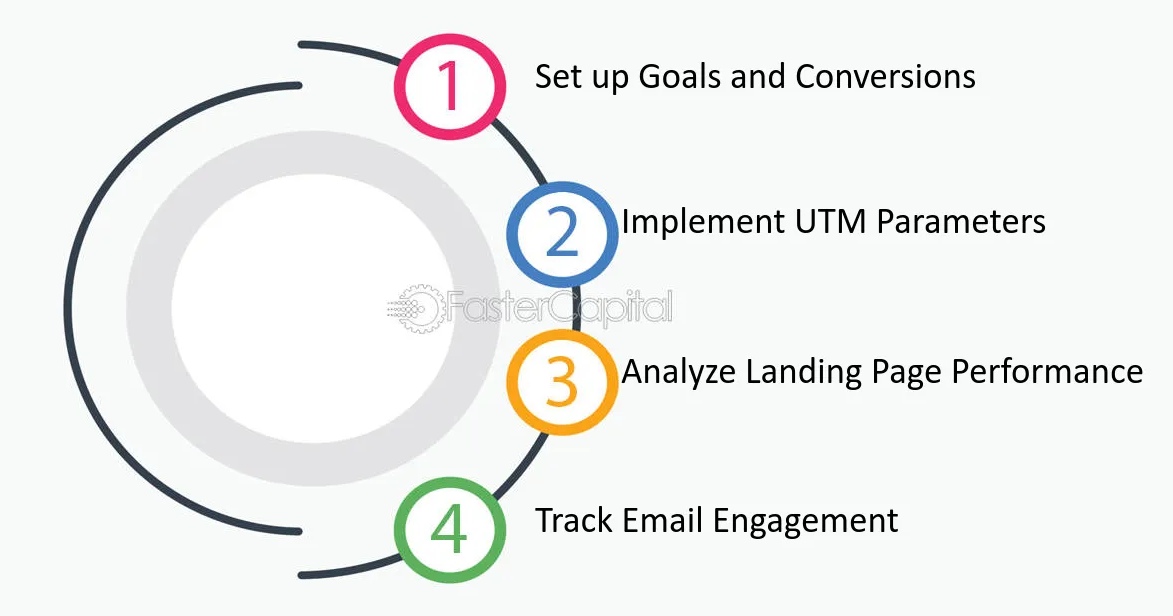
Mine the CRM data to create detailed buyer personas and identify trends in the best customer profiles. This gives useful insights when segmenting and personalizing messaging to leads.
Use the web and lead nurturing marketing analytics to see how prospects interact with the brand online and where they drop off in the buying journey. Their digital body language provides clues to refine the lead nurturing strategy.
Divide leads into groups or segments based on common characteristics like demographics, interests, behavior, etc. Then, customize nurturing for each segment. For example, use title, role, industry, or sales stage to account for nuances in messaging, ensuring that content resonates with recipients and reduces unsubscribes.
Leverage lead nurturing software, like automation and CRM tools, to streamline nurturing and take the burden off the team. CRM tools like Salesforce or Zoho provide a centralized database to store all prospect information and history in one place, enabling seamless hand-offs between sales and marketing. Integrate form tracking software like FormStory to capture all website visitors, ensuring no lead is ever lost and significantly increasing the lead nurturing process. Automate b2b lead nurturing best practices for emails, customer journeys, and more.
For instance, MailChimp makes it easy to set up triggered lead nurturing email sequences to automatically send relevant follow-ups when a prospect takes an action like downloading content. On the other hand, HubSpot allows setting up customized lead nurturing workflows to deliver personalized messaging and content to prospects at each stage of their journey.
Don’t stop nurturing once a lead converts to a customer. Nurture the relationship and drive adoption. Funnel customers through onboarding programs tailored to their roles, making the transition smooth and seamless.
Lead nurturing is centered around giving value freely and generously before expecting to get anything in return. This means consistently providing prospects with educational, helpful content and resources without an immediate sales pitch or call to action.
Give thoughtful advice and recommendations without strings attached. Eventually, when prospects are ready to make a purchase, they will remember the brand’s helpful guidance and repay it with their business and loyalty.
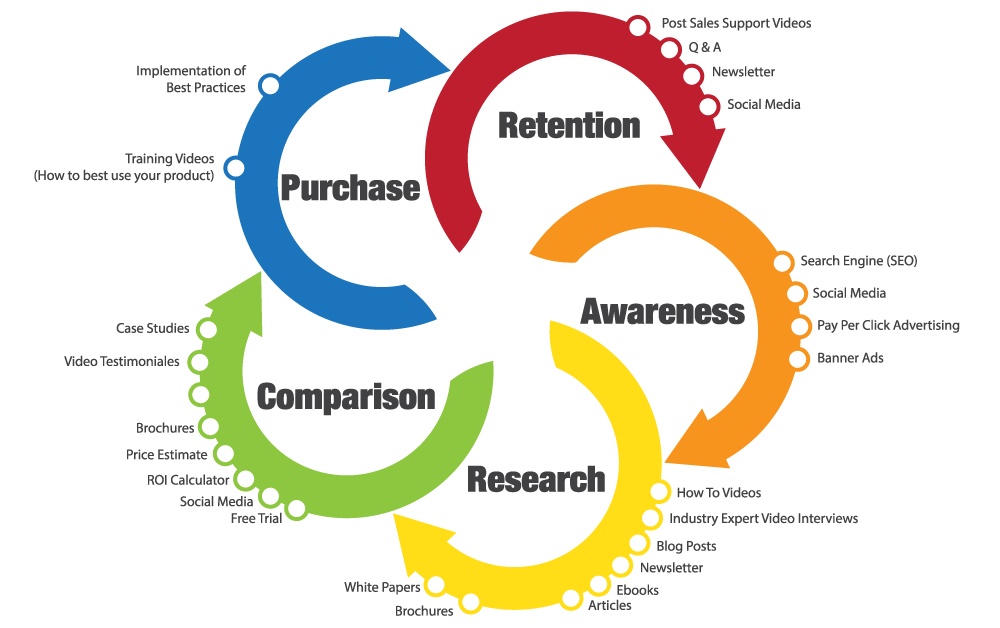
Image source bloominari.com
Continuously analyze your website user behavior and go deeper into quantitative data around lead nurture activities through metrics like web form analytics, website analytics, email open/click-through rates, content downloads, and sales conversions. This data provides objective insights into what types of content, messaging, follow-up sequences, and nurturing approaches resonate best with the audience.
Make it a priority to A/B test different lead nurturing strategies and messaging regularly. For example, send one lead nurturing email follow-up sequence to half the leads and a different one to the other half. See which one delivers better conversions.
Personalized marketing should be central to every lead nurturing initiative, from emails to landing pages to content offers. Leverage details like prospect name, company, industry, job title, etc., to tailor messaging and emphasize relevance. Avoid a one-size-fits-all nurturing approach at all costs.
Don’t underestimate the impact of “thank you” or confirmation pages after a prospect fills out a form or downloads content. A simple page acknowledging their submission and thanking them for their interest makes a strong positive impression.
There are many proven strategies and tactics to nurture leads effectively. Let’s explore some of the most impactful ones in more detail:
Implement nurturing across multiple channels like email, website, social media, direct mail, and ads. Tailor messaging for each channel and lead based on their preferences and behavior data. Multichannel nurturing improves results as leads engage via their preferred mediums. Just ensure continuity of messaging across channels.
Email is ideal for nurturing thanks to its direct reach and relatively high engagement. Capture subscriber emails through website forms and content offers. Use data like name, company, and role to segment and customize email content.
Using forms on the website, at events, and in content offers to collect emails is one of the best lead nurturing practices. Provide incentives, like free trials or discounts, to complete forms.
The data captured in forms helps segment and tailor email content for each subscriber. Personalized B2B lead nurturing emails have higher click-through rates.
Incorporate strategies to personalize website content to optimize customer engagement. Create blog posts, ebooks, kits, and other content assets that value leads based on their interests, company, role, and goals.
Monitor social conversations to identify and engage prospects by responding and sharing relevant content. Retarget leads through customized social media ads.
🌱🚀 Supercharge Your Lead Nurturing Process with These Tips!
Remember, successful lead nurturing is about building relationships.
Tailor these tips to fit your unique business context and watch your leads blossom into loyal customers! 🌟💼 #TuesdayTips #LeadNurturing pic.twitter.com/Vafxmdzp9W
— The Global Associates (@tga_india) December 12, 2023
Forms play a crucial role in capturing leads for nurturing. Make them short and personalized, and offer an incentive. Place them strategically across the website and content. Use progress bars and “thank you” pages. Follow up each form submission with a relevant email.
The data captured through online forms provides valuable insights into leads when adequately analyzed. For example, you can use it to do the following:
These insights you gain from form analytics allow you to better nurture leads by creating targeted campaigns, personalizing follow-up messages, sending more relevant content offers, and optimizing form design. Form analytics enables a data-driven approach to understanding lead preferences and behaviors. This improves lead nurturing efforts through tailored content and messaging that resonates better for each segment or individual lead.
Assess the lead quality and use lead scoring to identify those most likely to convert, then segment them based on comm on factors like role, industry, behavior, etc., to nurture them effectively towards a sale.
Set up lead nurturing software to send relevant follow-up emails immediately after someone fills a form, downloads content, or clicks a link. Quick, personalized follow-up boosts engagement metrics.
Ensure all teams can access lead data and campaign info to provide a seamless nurturing experience. Marketing nurtures, while sales follow up on hot leads. Support continues nurturing post-purchase.
Track measurable metrics like form completion rates, email open rates, content downloads, lead scoring trends, and sales conversions. Let data guide nurturing decisions.
Understand how well leads are moving through each funnel stage. Identify weak points causing drop-offs to improve lead flow.
Track lead nurturing campaign performance and continuously test new nurturing approaches to determine what resonates most with the audience.

Image source monday.com
Analytics software reveals who leads are, what content they engage with, and how they convert. These insights allow nurturing more effectively. For example, with form tracking tool and lead submission analytics, you can assess metrics like form conversion rates, drop-off points, and text responses to provide insights into which forms attract the most leads and where prospects may get stuck or lose interest.
Analyzing the submitted form data itself is also invaluable. You can identify the most common lead profile attributes among high-converting prospects, as their submitted questions and interests reveal content preferences.
While automation is excellent for scalable nurturing, the human touch still matters when building relationships with leads. Consider the following:
Face-to-face events, sales calls, and product demos allow deeper connections through personalized conversations and engagement.
Engage hot leads directly on social platforms by responding to their posts, sending customized messages, and scheduling short video chats.
Remind leads about the brand across the web through retargeting ads and personalized messaging using lead nurturing software after they’ve left the site. One of the simplest lead nurturing examples: If someone downloads a report on digital marketing trends, serve them an ad with related lead nurturing content while they browse other sites; this shows that the brand cares about its journey.
Surveys provide direct customer feedback to identify pain points and improve nurturing campaigns. Ask about their role, challenges, preferred content formats, and brand impressions. Apply insights to refine nurturing campaigns for better resonance and conversions. Keep surveys concise and offer an incentive for participation. Let prospects know their feedback is valued and helps improve offerings.
Lead scoring helps determine which leads are sales-ready to prioritize follow-up and nurturing. Here are the main components of an effective lead-scoring strategy:
Assess how well a lead matches the ideal customer profile or buyer persona based on characteristics like demographics, role, industry, company size, etc. A lead that closely fits the ideal customer has a higher score. For example, B2B lead nurturing best practices include weighing factors like role seniority, company size, and industry in addition to individual lead behavior and interest.
Actively monitor lead activity and engagement to gauge interest level. Higher form submissions, content downloads, email opens/clicks, site time, and sharing signal higher interest and a better lead score.
Assess lead behavior on the website, including pages visited, CTAs clicked, content accessed, etc., to determine buying intent. Leads displaying very targeted, relevant behavior should score higher.
Assess leads’ stage in the buyer’s journey based on their content preferences, questions asked, and marketing touches. Leads in later stages, like decision or evaluation, score higher than new leads.
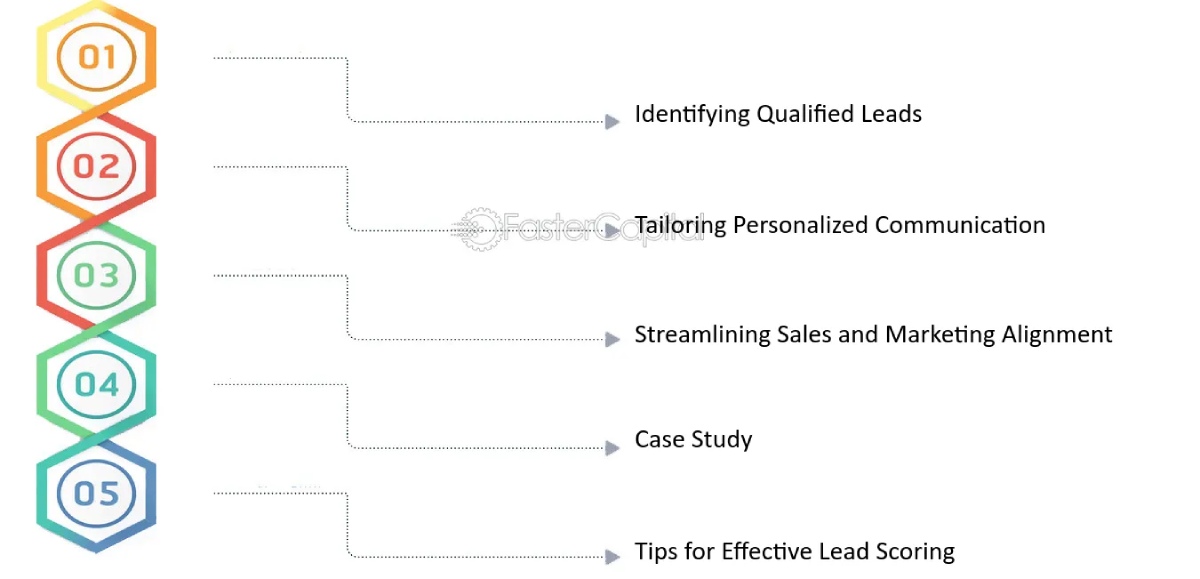
What is the definition of lead nurturing? A question we answered thoroughly in this article to help you lay the foundation for lifetime value through stellar first impressions and lasting loyalty. When done right, nurturing conveys “we’re in this together” rather than “buy from us now.” A single customer will repay the investment tenfold through referrals, repeat purchases, and word-of-mouth raves.
So, take the first step today. Develop your B2B lead nurturing strategies. Map out thoughtful content and communications tailored to each stage of the audience’s journey. Set up systems to capture prospect data and measure results.
Stay patient, and the sales will come when the time is right. Soon, you’ll be reaping the substantial rewards of nurtured leads, blossoming into loyal customers.